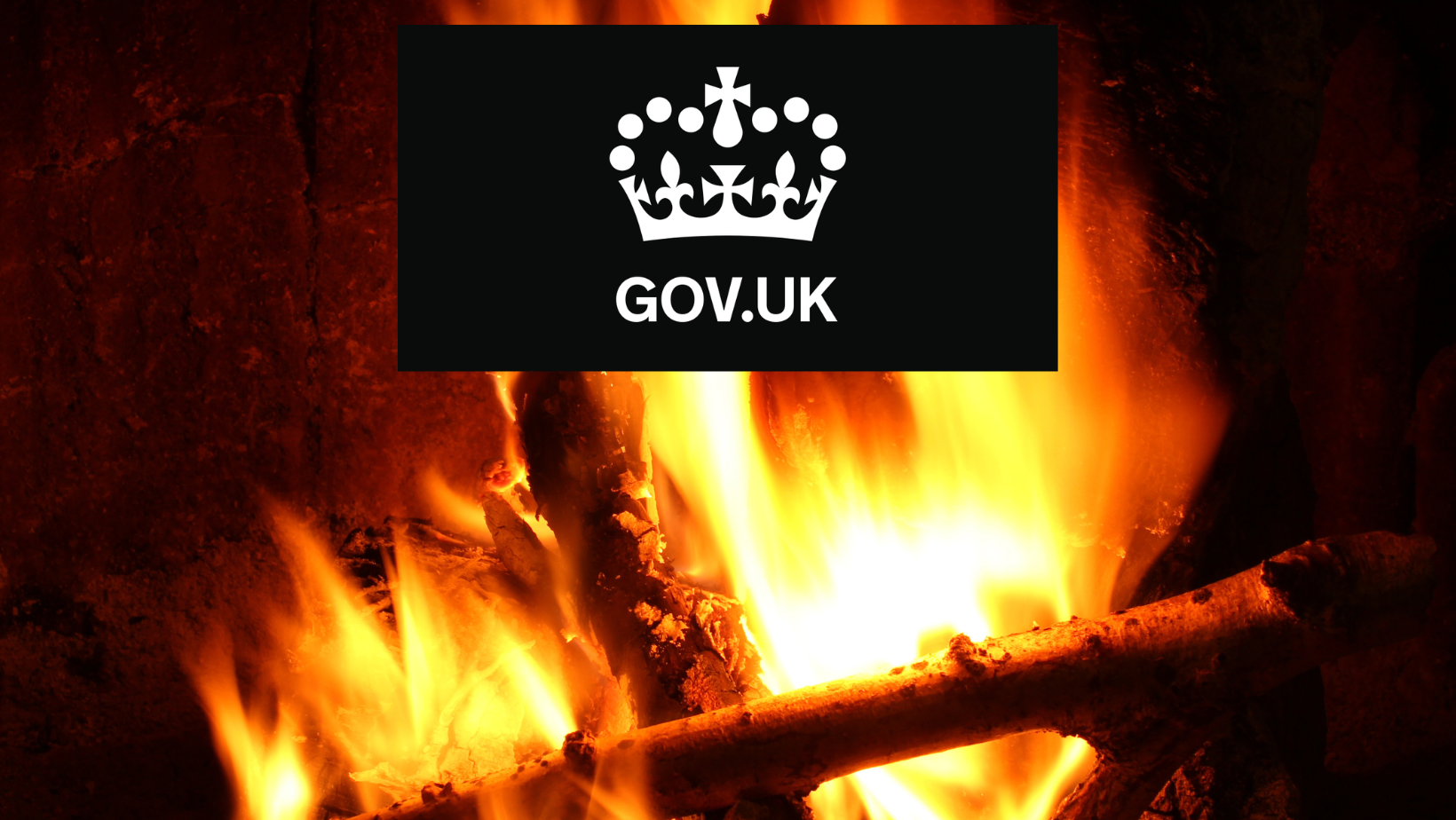Is It Illegal To Install Your Own Wood Burner In The UK?
No, but there are lots of things to consider. In this article we walk you through some of the key factors when deciding if a DIY wood burner install is for you.
The legality of installing a wood burner yourself can vary depending on your location and local regulations. In many places, installing a wood burner may be subject to building codes, safety regulations, and environmental standards. Here are some general points to consider before undertaking a domestic home install.
According to government statistics, domestic wood burning constituted 25% of PM2.5 emissions in 2020, marking a concerning 35% increase from 2010 to 2020. This surge establishes domestic wood burning as the primary contributor to small particle air pollution in the UK, surpassing even the emissions from road traffic. The data underscores the urgency of adhering to smoke control regulations and employing approved appliances to mitigate the environmental impact of wood burning activities.
Navigating Building Control for DIY Woodburner Installation in the UK
If you’re considering a DIY woodburner installation in the UK, engaging with Building Control is a vital step, we suggest submitting an application 2 weeks before you would like work to start. The process is generally straightforward but requires adherence to specific guidelines.
- Application Submission: Before commencing any work, submit an application to ‘Building Control’. In the UK, this process is typically uncomplicated. Visit your local Building Control’s website (a council department) and search for a downloadable form, often labelled as “building notice and full plans application.”
- Form Completion: When completing the form, focus on the “building notice” section rather than the full plans. This streamlined approach is commonly used for smaller projects, making the application process more accessible.
- Building Control Engagement: Some Building Controls may insist on appointing an installer themselves to assess your installation’s compliance with Building Regulations. This additional step ensures that your DIY work aligns with the necessary standards – not common, but something to be aware of.
- Final Paper Work: At the end of the process you will and should receive paperwork that states your Wood Burner install is legal, supporting you when undertaking home insurance.
For additional details on Building Regulations and compliance, refer to the official guidelines here.
The New Laws For Wood Burners Installations In The UK from 2022
In 2022, the UK implemented stringent regulations for wood-burning stoves, multi-fuel stoves, and fireplaces. These regulations mandate adherence to the Ecodesign guidelines, a set of strict standards aimed at promoting environmental sustainability. Here’s what you need to know:
- Ecodesign Requirements: All new wood-burning stoves and multi-fuel stoves manufactured in the UK must adhere to the Ecodesign guidelines. These guidelines focus on enhancing energy efficiency, reducing emissions, and promoting eco-friendly practices in the design and manufacturing of heating appliances.
- Building Regulations Compliance: The installation of these stoves is not exempt from scrutiny. To ensure safety and structural compliance, installations must adhere to Building Regulations. This step involves submitting applications to Building Control, with a streamlined “building notice” approach commonly used for smaller projects.
- Fuel Type Restrictions: The regulations extend beyond the appliance itself to the fuel used. Specific rules dictate the type of fuel permissible for use in these stoves. Adhering to these guidelines not only ensures optimal performance but also contributes to environmental conservation.
In essence, the EcoDesign regulations signify a comprehensive approach to environmental responsibility in the realm of wood-burning stoves. Compliance with these regulations is not just a legal requirement; it is a commitment to a sustainable and eco-conscious approach to heating. As you embark on wood burner installations, be sure to stay informed about the specific requirements outlined in the EcoDesign guidelines and Building Regulations for a seamless and environmentally friendly experience.
Insurance Considerations When Installing Your Wood Burner
Installing a wood burner yourself could impact your home insurance. Some insurance policies may require professional installation to meet safety standards. Informing your insurance provider about any changes to your home is essential.
“If you’ve recently installed or are thinking of installing a wood or multi fuel burning appliance, you will need to check whether you have appropriate cover under your existing home insurance. This can be especially true if you have a home of non-standard construction, such as timber framed or thatched roof.” – As discussed on ArbTalk
So in summary, every insurance company has different T&Cs and small print so its best to check with your provider and make sure you are covered.
Be Aware Of Smoke Control Areas in the UK When Installing A Wood Burner
In the UK, designated smoke control areas prohibit the release of smoke from chimneys, allowing only the use of authorized fuel or Defra-approved appliances. Failure to comply with these regulations in England may result in penalties, with chimney smoke release in smoke control areas potentially incurring fines of up to £300. Additionally, purchasing unapproved fuel for non-Defra-approved appliances can lead to fines of up to £1,000.
Find out here if you live in a smoke control area in the UK.
UK Building Regulations For Installing A Wood Burner – Things To Check
These include but are not limited to:
1. Your wood burner hearth
Your hearth needs to have the following:
- At least 300mm clearance at the front of the burner
- At least 150mm clearance on either side
- The entire hearth area should be a minimum of 840 x 840mm and 12mm thick.
2. Height of your chimney
In the realm of chimney usage for furnaces, strict regulations govern their height to mitigate environmental impact and health concerns. The legislation prohibits the burning of specific fuels or exceeding set quantities without obtaining prior approval for chimney height. Offenders may face fines, emphasizing the importance of compliance. The approval process involves local authorities assessing factors like emissions and neighboring structures to ensure public health and environmental standards. Notably, failure to decide within a stipulated timeframe results in automatic approval.
The appeal process, directed to the Secretary of State, allows for modifications or affirmations of decisions. Additionally, regulations extend to building construction plans, where chimneys’ proposed heights must prevent emissions from becoming a nuisance or health hazard, with provisions for appeal and extension of rejection periods. This comprehensive framework underscores the UK’s commitment to balancing energy needs with environmental and health considerations.
Use the application application form below to apply: Chimney Height Approval Application Form
3. The wood burner smoke test
Ensure the safety of your wood burner and flue system by conducting a straightforward smoke test using smoke pellets. Following a flue sweep to clear potential soot blockages, you can perform a ‘type 2’ smoke test. These tests, using affordable smoke pellets, can be bought here on amazon, last 30 to 60 seconds and come in various colours such as grey or orange, with bright hues enhancing visibility on overcast days.
The smoke test serves multiple purposes, assessing the operational safety of the stove to minimize the risk of carbon monoxide in the room. Additionally, it gauges the effectiveness of the flue system’s draught and identifies any potential leaks in the flue liner. Regularly checking these aspects is a simple yet crucial step in ensuring the proper functioning and safety of your wood burner installation.
Before attempting a DIY wood burner installation, it is crucial to research and understand the local regulations and requirements in your area. Hiring a professional installer who is familiar with local codes and safety standards can help ensure a safe and compliant installation – read our guide to pricing your wood burner and installer. Failure to comply with regulations could result in fines, the need to redo the installation, or other legal consequences. Always prioritize safety and adherence to local laws when considering a wood burner installation. Do your research and happy burning!


